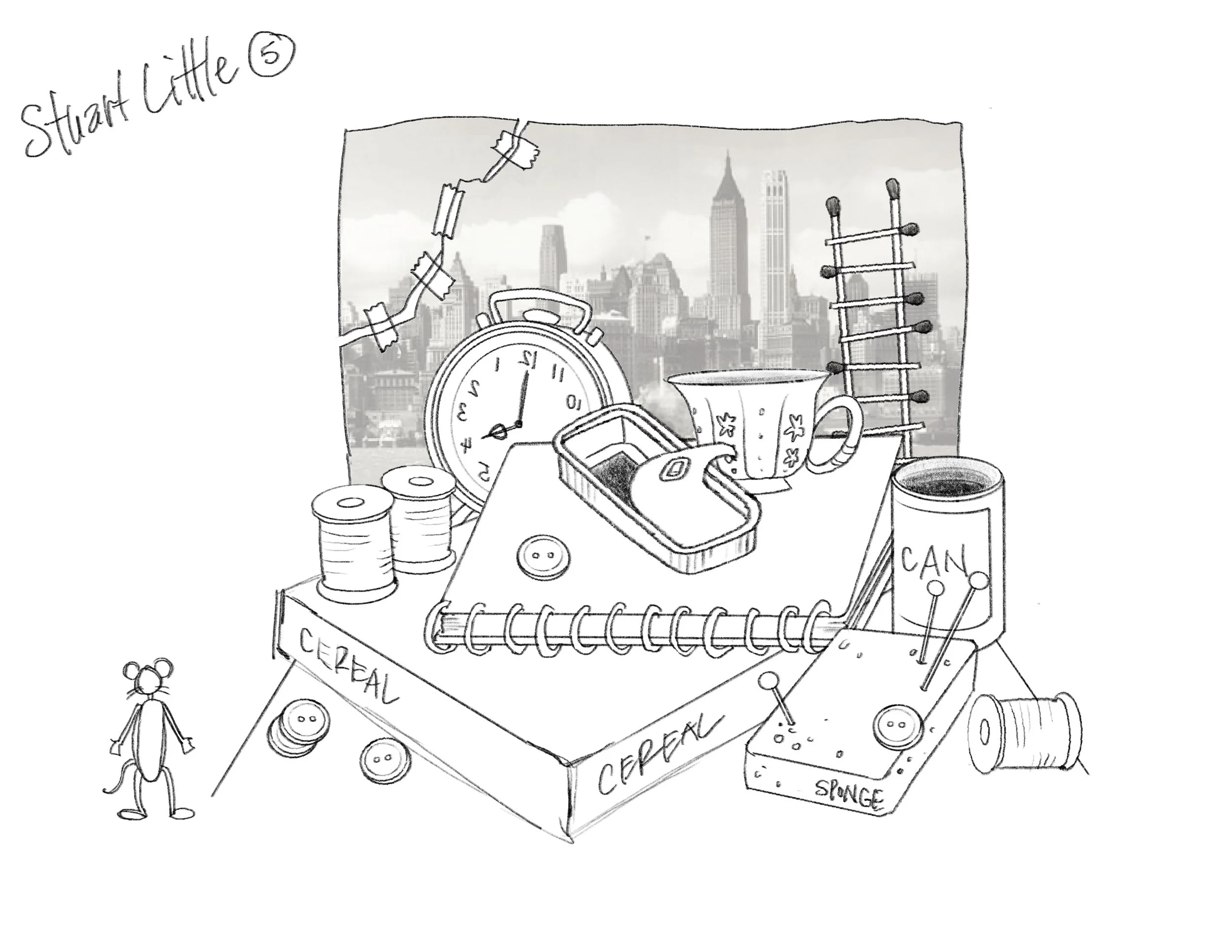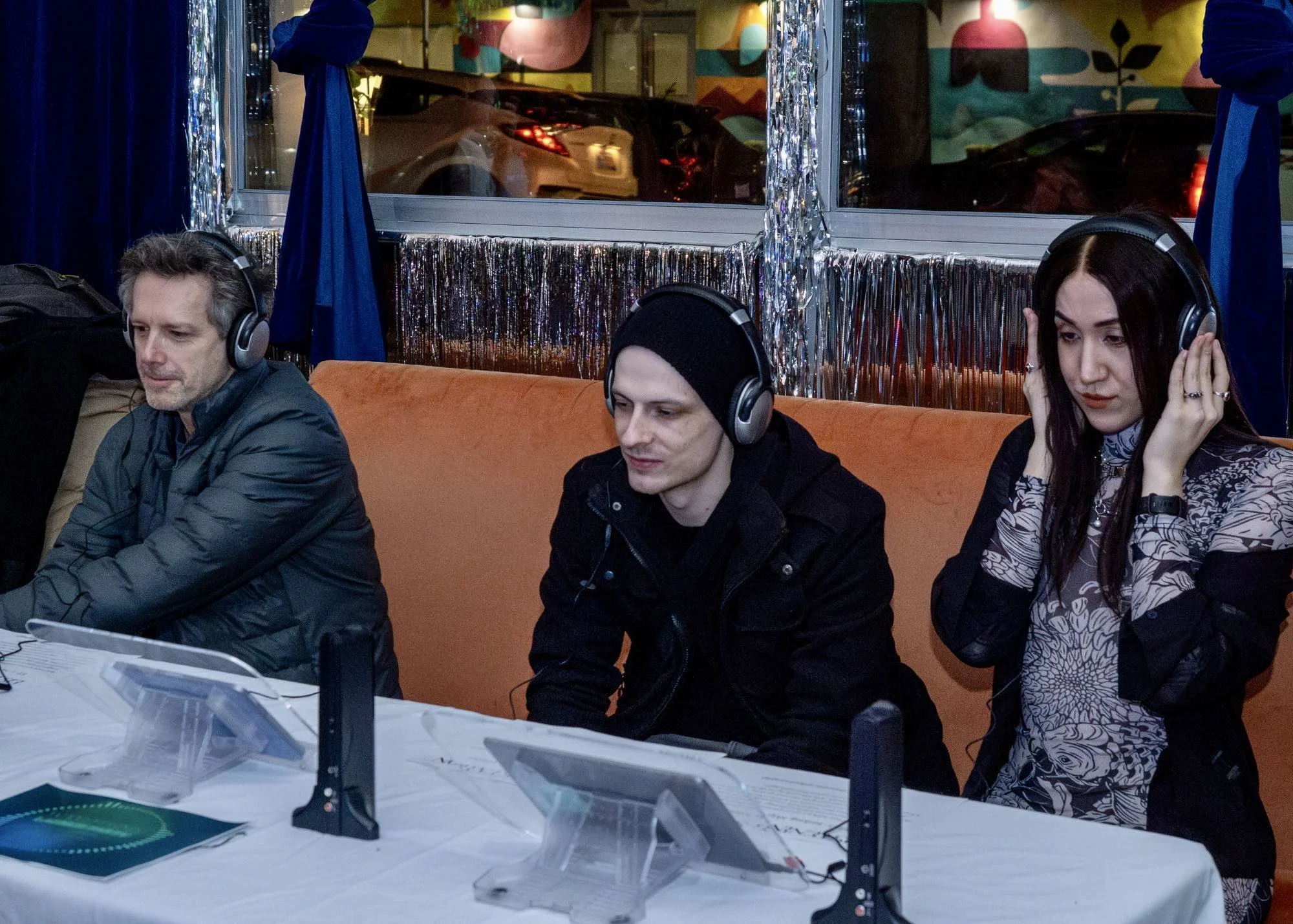Stir Q&A: Stuart Little director Jennica Grienke reflects on nurturing bravery in a big world
At Carousel Theatre for Young People, the titular mouse comes to life with 1940s flair reminiscent of E.B. White’s original novel
Jennica Grienke.
Carousel Theatre for Young People presents Stuart Little at the Waterfront Theatre from April 23 to May 11
STUART LITTLE IS ONE of those characters that almost everyone seems to love—and how could you not root for the fella? The mouse makes his way in a world full of humans with kindness, adaptability, and ingenuity, all despite his small stature.
His story was first introduced to audiences in E.B. White’s 1945 children’s novel, and then popularized by director Rob Minkoff’s 1999 film, with Michael J. Fox as the voice of Stuart. And in the realm of live theatre, Joseph Robinette has adapted the tale for the stage.
Stir touched base with Carousel Theatre for Young People’s co–artistic and managing director Jennica Grienke, who’s directing a take on Robinette’s Stuart Little this spring, to learn a bit more about the production ahead of its Waterfront Theatre run.
Stuart Little is a household favourite of many families who have fond memories of watching the 1999 movie together. What is it about this story that you think makes it so special—and so easy for people to connect to across book pages, film screens, and theatre stages?
Stuart Little endures across generations because, at its heart, it’s a story about belonging, bravery, and hope—universal themes that resonate with audiences of all ages, across decades. Stuart may be small in stature, but his courage, kindness, and determination make him a hero in the eyes of children and adults alike. His journey is largely whimsical and yet profoundly moving as he discovers what it means to find your place in the world, even (and especially) when you’re different.
Regardless of whether it is through E.B. White’s prose, the charm of Michael J. Fox in the 1999 film, or the magic of live theatre, Stuart’s story invites us to see the world through a lens of wonder and possibility. Onstage, I am especially excited to bring the magic of song to this charming tale, transporting us even further into Stuart’s world through music that lifts the spirit and fuels the imagination. Paired with our incredible set—where giant everyday objects transform into Stuart’s surroundings—we invite audiences to see the world through his eyes. A spool of thread becomes a chair, a button transforms into a steering wheel, and suddenly the ordinary becomes extraordinary.
Theatre sparks the imagination, and Stuart Little is the perfect tale to encourage young minds to view the world through a fresh, creative lens. We [invite] our audiences to step into Stuart’s world with us, to embrace adventure, to celebrate the power of being different, and to discover that even the smallest among us can dream big and make a difference.
Lots of the best scenes in Stuart Little revolve around the situational comedy of a little mouse navigating a world full of humans (like Stuart’s adventure into a kitchen sink drain to retrieve his mom’s lost ring, for example). How does Joseph Robinette’s live-action adaptation capture some of those animated aspects of the story?
Joseph Robinette’s adaptation of Stuart Little brilliantly captures the charm and comedy of a little mouse navigating a human-sized world by leaning into theatrical imagination and visual storytelling. In our production at Carousel Theatre for Young People, we’re taking that even further with clever staging that moves fluidly between onstage and offstage action, inviting the audience to imagine [being] alongside Stuart as he zips in and out of sight on his adventures.
To emphasize the hilarious scale differences that define Stuart’s journey, we’re using triples of nearly every prop: human-sized, mouse-sized (from a human perspective), and oversized (from Stuart’s point of view)—shout-out to Monica Emme, our incredible props designer. This playful use of scale creates delightful visual gags and helps audiences see the world from multiple angles, including Stuart’s own. It also allows for quick, surprising shifts in perspective, heightening the situational comedy and the sense of good ol’ theatre magic.
Rest assured, Stuart is never abandoned to this oversized world. He’s supported by parents who lovingly adapt their environment for him; by his ally Dr. Carey, who embraces Stuart as her equal; and by a cast of animal allies, including the beautiful bird Margalo—who each help him soar beyond the limits of his small frame. Robinette’s script offers the perfect springboard for this kind of inventive theatricality, blending heart and humour in a way that makes Stuart’s big little world come alive.
How are song and dance incorporated into this production? And how do the visual elements, such as Christopher David Gauthier’s costume design and Shizuka Kai’s set design, pay homage to the original book and movie?
When I first read Joseph Robinette’s adaptation of Stuart Little, my immediate thought was ‘This story needs music!’ I soon discovered a musical version existed, but what sound designer MJ Coomber and I were really craving was something more specific: music that would pay homage to the original 1945 New York City setting. Think jazzy, ragtime bops that capture the rhythm of the city, blended with the sweeping, cinematic energy of Stuart’s grand adventures—similar to the spirit of Alan Silvestri’s score for the 1999 film. So what you’ll hear in this production is Robinette’s faithful text set to original compositions, punctuated with classic 1940s tunes that immerse us in the world of that time.
It’s important to note that the film and the book follow very different paths. Robinette’s adaptation stays wonderfully close to E.B. White’s original, and we lean fully into that charm. The costume design embraces 1940s flair with a theatrical twist, like our neighbourhood pigeon decked out in a dramatic feathered fascinator and flowing grey coat, as if she flew straight out of 1940s Vogue.
Shizuka Kai’s set is equally whimsical and imaginative, built around the idea of immersing audiences in Stuart’s perspective. Rather than watching his story unfold from our human scale, we step into his tiny, eclectic world, filled with collectibles and curious objects that feel larger than life. The set transforms as the story unfolds, from Central Park—where the audience becomes the boat-race pond—to a bustling dentist’s office, and even a countryside classroom. We’ve also paid careful homage to the era with period-accurate branding and labels, like a vintage box of Cheery Oats or a giant can of Friends Beans, adding texture and nostalgia to Stuart’s little-big world.
I am thrilled at how these elements are working together to create a world that feels both familiar and fantastically new, honouring the legacy of Stuart Little while making space for wonder, laughter, and surprise.
Shizuka Kai’s preliminary set rendering for Carousel Theatre for Young People’s Stuart Little.
What are some important lessons that audiences can learn from Stuart Little? Why do you think his character continues to resonate with folks today?
Stuart Little might be small, but he’s full of heart—and that’s what makes his story so special. He teaches us that being brave doesn’t mean you’re not scared. It means you show up anyway, even when the world feels a little too big. He’s a mouse in a human world, but he never lets that stop him. Instead, he figures things out, stays kind, and keeps going.
What makes Stuart really lovable is how unapologetically himself he is. He doesn’t try to fit into someone else’s mould; he finds his own way, and that’s super empowering, especially for kids learning to embrace who they are. Plus, the way he approaches every challenge with curiosity and creativity? Total goals.
Even now, Stuart’s story still hits home because we all know what it feels like to be small in a big world sometimes. Whether you’re five or 50, it’s easy to root for someone who keeps trying, stays true to themselves, and makes friends wherever they go.
What have you cherished the most about getting the chance to bring such a beloved story to the stage for its 80th anniversary? What can audiences expect from the production overall?
Bringing Stuart Little to the stage for its 80th anniversary has been an absolute joy and a total honour. There’s something incredibly special about revisiting a story that so many people hold close to their hearts, whether they grew up reading the book or watching the movie, or have since shared it with their own kids. What I’ve cherished most is finding new ways to breathe theatrical magic into Stuart’s world while staying true to the warmth, wit, and wonder that have made it such a timeless favourite.
In no small part due to our incredible cast of actors, audiences can expect a playful, heartfelt, and visually inventive production that captures all the charm of the original story—with a few delightful surprises. At its core, this is a story about courage, kindness, and never giving up, and we’re delivering it with a whole lot of heart. Whether you’re meeting Stuart for the first time or reconnecting with an old friend, this production promises a joyful, theatrical adventure for the whole family. ![]()


























